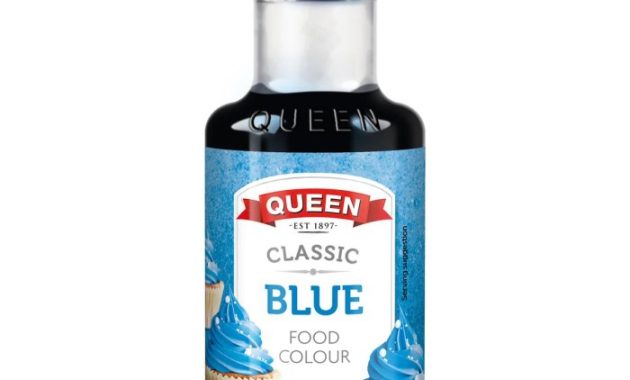Applications and Techniques for Using Orange Food Coloring
How to make orange food coloring – Orange food coloring, a vibrant hue derived from natural or artificial sources, offers a wide array of culinary applications. Its versatility allows for the creation of a spectrum of shades, from delicate peach to rich amber, enhancing the visual appeal and adding a touch of warmth to various dishes. Mastering its use involves understanding its properties and applying appropriate techniques to achieve consistent and desirable results.
Creating Different Shades of Orange
Achieving diverse shades of orange with food coloring hinges on the skillful manipulation of color concentration and the addition of other colors. A light peach is easily obtained by using a small amount of orange coloring in a larger volume of batter or frosting. Gradually increasing the amount of orange food coloring intensifies the hue, moving through shades of tangerine, marigold, and finally to a deep amber.
Adding a touch of yellow will brighten the orange, creating a more sunny hue, while a small amount of red will deepen it, leading towards a more reddish-orange. Experimentation is key to discovering the perfect shade for your culinary creation. For instance, a light peach frosting might be ideal for a delicate sponge cake, while a deep amber could enhance the richness of a carrot cake.
Applying Orange Food Coloring to Various Food Types
The application of orange food coloring varies depending on the food type. In cakes and frosting, it’s typically added directly to the batter or frosting base, mixing thoroughly until a uniform color is achieved. The consistency of the batter or frosting will influence the amount of food coloring needed to achieve the desired shade. For beverages, such as fruit punches or cocktails, a few drops can transform a clear liquid into a vibrant orange drink.
Candies, particularly hard candies, benefit from the addition of orange food coloring during the cooking process, resulting in intensely colored sweets. Fondant, used extensively in cake decorating, requires a slightly different approach, detailed in the following section.
Dyeing Fondant with Orange Food Coloring
Kneading orange food coloring into fondant requires a systematic approach to ensure even distribution. First, prepare your fondant by ensuring it is pliable and free of cracks. Then, add a small amount of orange food coloring directly to the fondant, beginning with a small quantity and adding more incrementally until the desired shade is reached. Thoroughly knead the coloring into the fondant, using your hands to ensure that the color is distributed evenly throughout the entire mass.
This process might require some patience, but the result will be a uniformly colored fondant, perfect for creating intricate decorations. If the fondant becomes too dry during kneading, add a tiny amount of water or vegetable shortening to restore its pliability.
Achieving Consistent Color Distribution
Consistent color distribution is crucial for visually appealing results. In baking, thorough mixing is paramount. Use a spatula or electric mixer to ensure the food coloring is completely incorporated into the batter or frosting. For liquids, gentle stirring is usually sufficient. However, remember that the intensity of the color might appear lighter after baking or cooking due to heat and the other ingredients involved.
It’s advisable to slightly over-saturate the color before baking to account for this effect.
Preventing Bleeding or Separation, How to make orange food coloring
Bleeding and separation can occur if the food coloring is not properly incorporated or if the recipe’s ingredients interfere with the color’s stability. Using high-quality food coloring can mitigate these issues. Furthermore, ensure all ingredients are at room temperature before adding the food coloring, especially in recipes containing fats or oils. Proper mixing is key; avoid under-mixing, which can lead to uneven coloring and streaks.
In some cases, adding the food coloring gradually, allowing each addition to be fully incorporated before adding more, can prevent separation.
Questions Often Asked: How To Make Orange Food Coloring
What are the potential health concerns associated with artificial orange food coloring?
Some studies suggest links between certain artificial food dyes and hyperactivity in children, although more research is needed. Always check labels and consider using natural alternatives if you have concerns.
Can I freeze homemade orange food coloring?
Yes, freezing homemade food coloring can extend its shelf life. Store it in airtight containers to prevent freezer burn and maintain color integrity.
How can I adjust the shade of orange I achieve?
By adjusting the ratios of ingredients (in natural methods) or by adding other colors (yellow or red) you can create various shades of orange, from pale peach to deep amber. Experimentation is key!
How long does homemade orange food coloring last?
The shelf life of homemade food coloring depends on the ingredients and storage method. Refrigeration is generally recommended, and it’s best to use it within a few weeks for optimal color and flavor.
Mixing red and yellow food coloring creates a vibrant orange, perfect for cakes! But be warned, getting that bright hue off your hands can be a challenge – check out this handy guide on how to get food coloring off skin if you need a rescue plan. Then, once your masterpiece is complete and your skin is clean, you can proudly display your perfectly orange creation!

